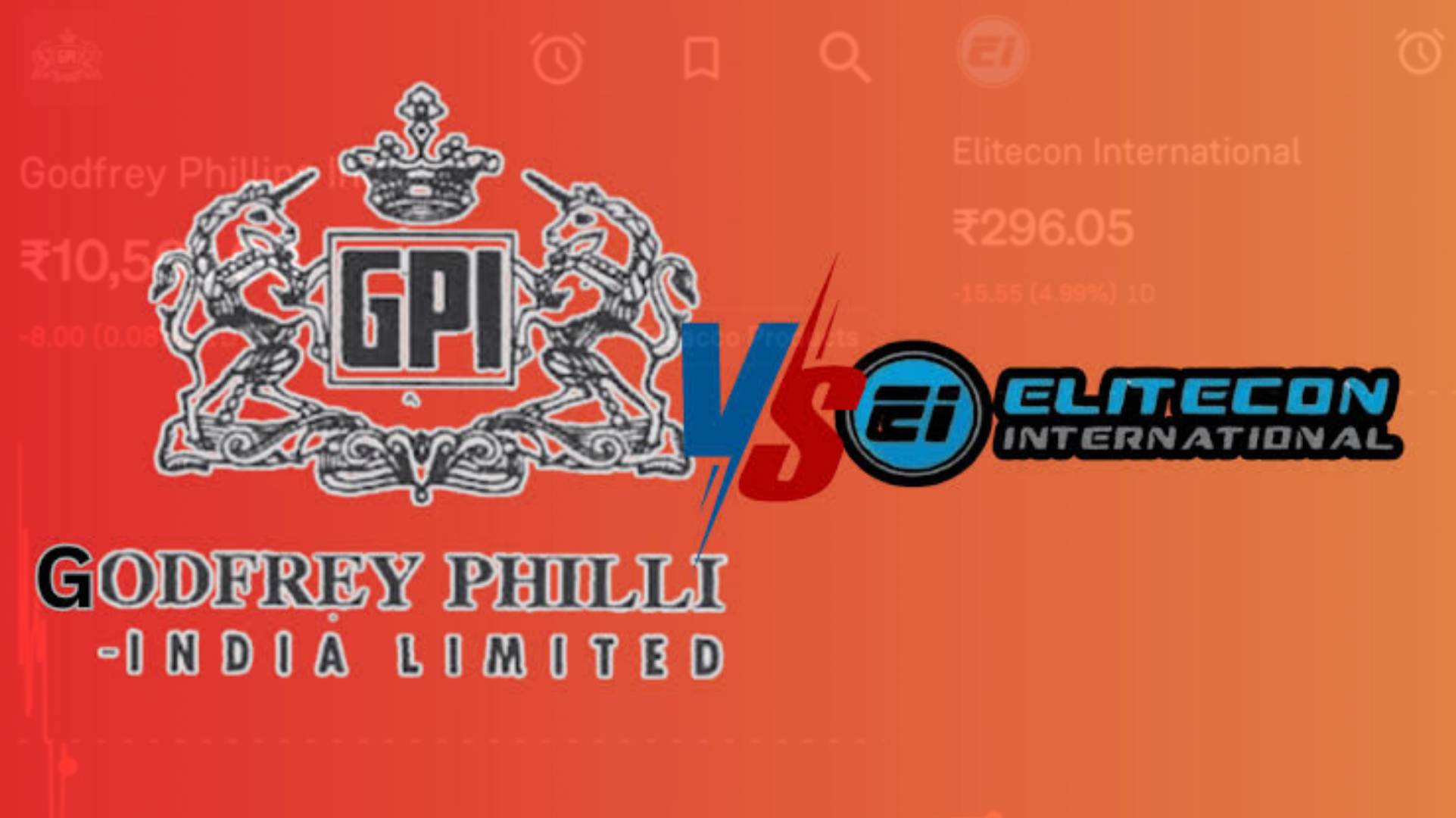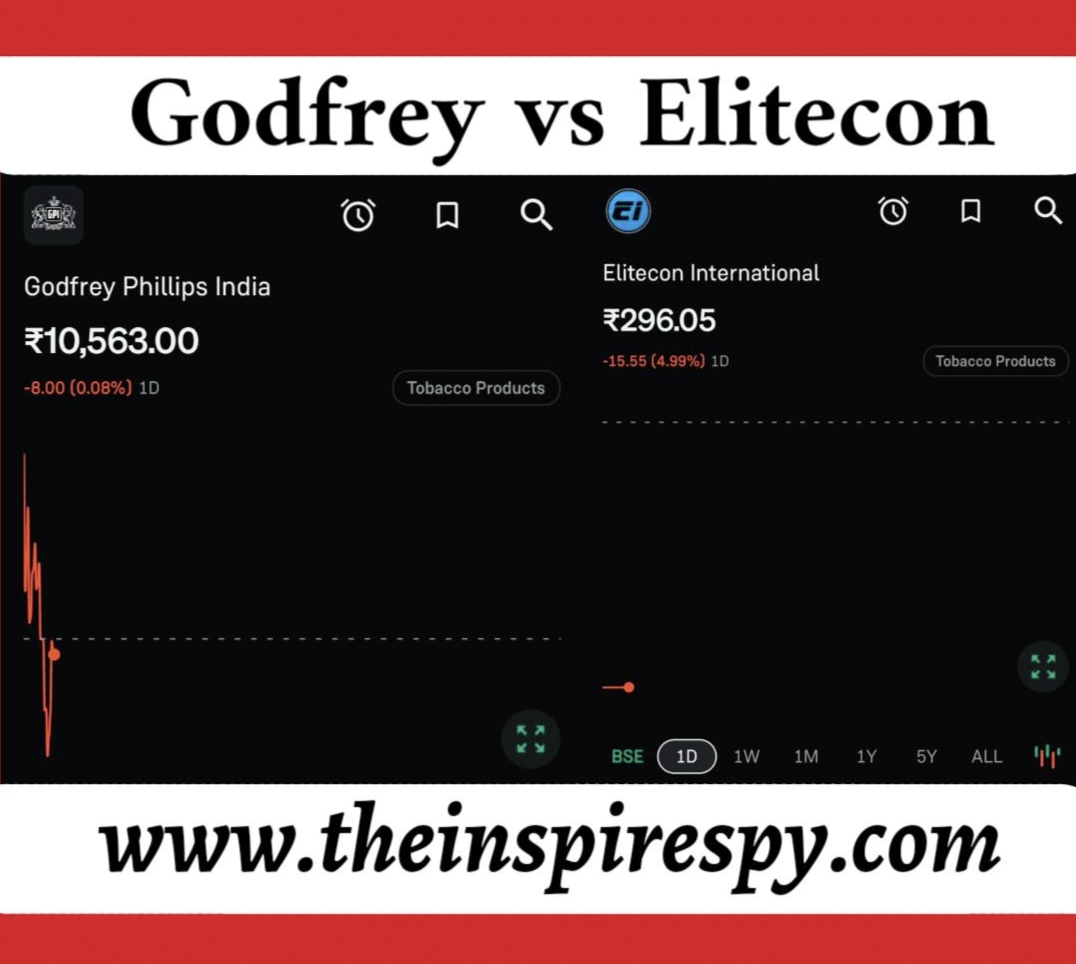The Indian tobacco industry remains one of the most competitive, high-stakes sectors in the Fast-Moving Consumer Goods (FMCG) landscape, with Godfrey Phillips India (GPI) and Elitecon International at the forefront of innovation, scale, and market penetration. In this long-form article, we dive deep into the multi-layered profiles, business models, financial metrics, growth strategies, regulatory risks, and investment qualities that make Godfrey and Elitecon standout players in 2025.
Table of Contents
1. Company Overview and Brand Legacy
Godfrey Phillips India is a market stalwart dating back decades under the Modi Enterprises umbrella, manufacturing a spectrum of iconic brands like Four Square, Red & White, and holding the esteemed license to produce Marlboro cigarettes for the Indian market. Its business extends beyond tobacco into pan masala, tea, and confectionery, supported by sprawling manufacturing facilities in Navi Mumbai and Ghaziabad. GPI’s International Business Division further amplifies its footprint with thriving exports and diversified adjacencies.
Elitecon International, formerly Kashiram Jain & Co., is a younger, fast-growing disruptor focused on tobacco manufacturing and trading—especially cigarettes, khaini, zarda, sheesha, and smoking mixtures. With major brands like INHALE and Al Noor, Elitecon leverages an aggressive export-led model, reaching markets in India, UAE, Singapore, Hong Kong, Europe, and the UK.
2. Industry Landscape & Consumption Trends
In 2025, global tobacco consumption is concentrated in Asia-Pacific (65%), followed by Europe, the Americas, and other regions. Indian sector growth averages 4.2% CAGR, keeping major players constantly innovating. Godfrey Phillips sits at the top with scaled production and a well-established supply chain. Elitecon stands out for its dynamic, international approach targeting niche segments with customized products.
3. Strategy: Growth Levers and Risk Mitigation
Godfrey excels in premiumisation, brand stewardship, and broad-based operational efficiency. Its strategic tie-up with Philip Morris (Marlboro) positions GPI firmly in the premium tier. Adjacency expansion into pan masala and tea de-risks revenue concentration, while its export business offers incremental growth.
Elitecon’s strategy focuses on R&D, manufacturing upgrades, and a refreshed corporate identity. Their push for international scale-up and doubling export revenues shows a relentless appetite for market share, but also exposes the company to cross-border risks and operational volatility.
4. Financial Deep Dive: Revenue, Margin & Valuation
| Metric | Godfrey Phillips India | Elitecon International |
|---|---|---|
| Market Cap | ₹43,051 crore | ₹8,975 crore |
| 5-Year CAGR | 52.69% | 123.81% |
| P/E Ratio | 53.37 | 752.77 |
| Dividend Yield | 0.86% | 0% (no dividend payout) |
| Quarterly YoY Sales (FY25) | -5.5% (decline) | 171% (growth) |
| Quarterly YoY Profit (FY25) | +27.1% | +93.8% |
| Debt Status | Low debt, strong reserves | Almost debt-free |
| Book Value | ₹10.89 | ₹1.00 |
Godfrey displays robust margin resilience, growing profits even during revenue slowdowns through operational excellence. Elitecon has shown meteoric sales—and profit—growth, but with far higher valuation ratios and volatility, making it inherently riskier but potentially more rewarding.
5. Stock Performance and Peer Comparison
Elitecon’s meteoric rise is reflected in its aggressive price movements—close to three times more volatile than market averages—while Godfrey remains a preferred core portfolio stock for its stability and consistency. Elitecon offers momentum but demands vigilance on earnings quality and governance. Dividend analysis underscores Godfrey’s reliability for income-oriented investors (dividend CAGR 5.4%), whereas Elitecon has yet to pay dividends, favoring reinvestment for growth.
6. Regulatory, Category & Global Risks
Both companies are exposed to regulatory swings, especially changes in tobacco taxation. Godfrey’s depth and diversified portfolio help buffer these shocks, whereas Elitecon’s international spread helps mitigate single-market risks but increases exposure to currency, compliance, and market access issues abroad.
7. Investment Takeaways: Which Company Suits Your Portfolio?
Godfrey Phillips India: Ideal for conservative investors seeking brand stability, regular dividends, and strong cash flow. Its diversified business and proven management make it a foundational stock in Indian tobacco/FMCG portfolios.
Elitecon International: Appealing to risk-tolerant, growth-focused investors looking for high-beta exposure. Elitecon’s upside is tied to international scale-up, but comes with increased volatility and execution risk. Close attention to governance is vital.
8. Why did Godfrey Phillips’ net profit rise despite falling revenue
Godfrey Phillips’ net profit rose despite falling revenue due to improved margins, tight operational efficiency, and a strategic focus on premiumization and cost control.
Margin Expansion and Operational Efficiency
The company’s strategic pivot toward premium products, like the Marlboro Compact, delivered higher gross margins even amidst price pressures in the broader market. This premiumization allowed Godfrey Phillips to sustain profitability even as revenue from traditional product lines moderated. Additionally, the expansion of distribution networks beyond major urban centers captured new cost efficiencies and supported margin strength.
Cost Management
Godfrey Phillips optimized costs by streamlining production, negotiating better terms with suppliers, and reducing overheads, which helped offset the lower topline. The company also benefited from technological upgrades in manufacturing and robust financial management, further boosting its bottom line.
Diversification and Brand Strength
By diversifying into adjacencies such as confectionery and pan masala, Godfrey Phillips created additional revenue streams and reduced dependency on cigarette sales. A strong brand portfolio and established manufacturing relationships, including licensing for premium products, reinforced its ability to maintain profits through economic and regulatory cycles.
9. Product Compression: Godfrey vs Elitecon
Godfrey Phillips India
Cigarette Brands: Four Square, Red & White, Cavanders, Tipper, and licensed manufacturing of Marlboro.
Other Tobacco: Pan masala, unmanufactured tobacco for export.
FMCG Extension: Confectionery (“Funda Goli,” “Naturalz,” “Funda C,” “Funda Gum Shums”) and retail via 24Seven convenience stores, offering groceries, ready-to-eat foods, beverages, cosmetics, photo services, bill payments, and more.
Sales Mix (9M FY24): 62% tobacco, 30% international, 8% consumer/retail.
Growth Focus: Expansion of export markets, upgraded retail, and broad diversification across FMCG.
Elitecon International
Tobacco Focus: Manufacturing and trading of cigarettes, khaini, zarda, sheesha, smoking mixtures.
Brands: INHALE, Al Noor, plus custom blends for varied international markets.
Export-Led Strategy: Aggressively pursues overseas growth in UAE, Singapore, Hong Kong, Europe, UK; leverages manufacturing upgrades and R&D for premium products.
Niche Approach: Product customization and rapid market adaptation are central, with limited non-tobacco diversification compared to GPI.
Conclusion
The contest between Godfrey Phillips India and Elitecon International illustrates a classic trade-off: stability and legacy vs. agility and explosive growth. Godfrey, with its mature brand set and operational mastery, offers predictable returns and resilience. Elitecon stands out for rapid expansion and bold moves, but its higher risk must be balanced with acute market awareness. Investors should align their choices according to their risk appetite and portfolio goals, while following the evolving dynamics of India’s tobacco industry in 2025.













